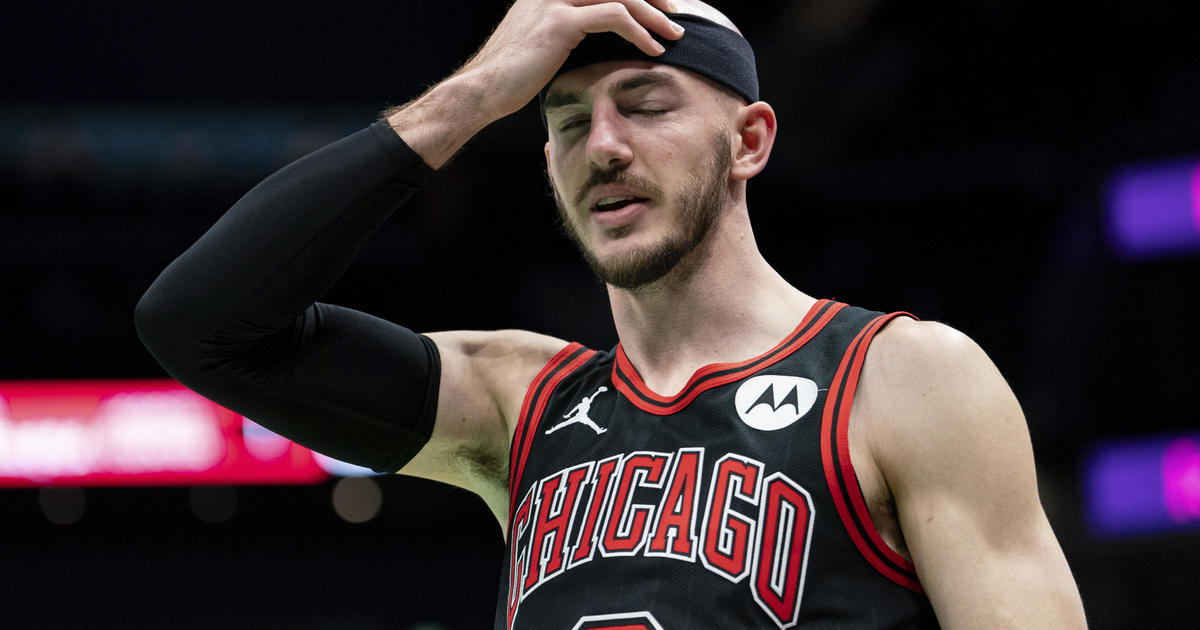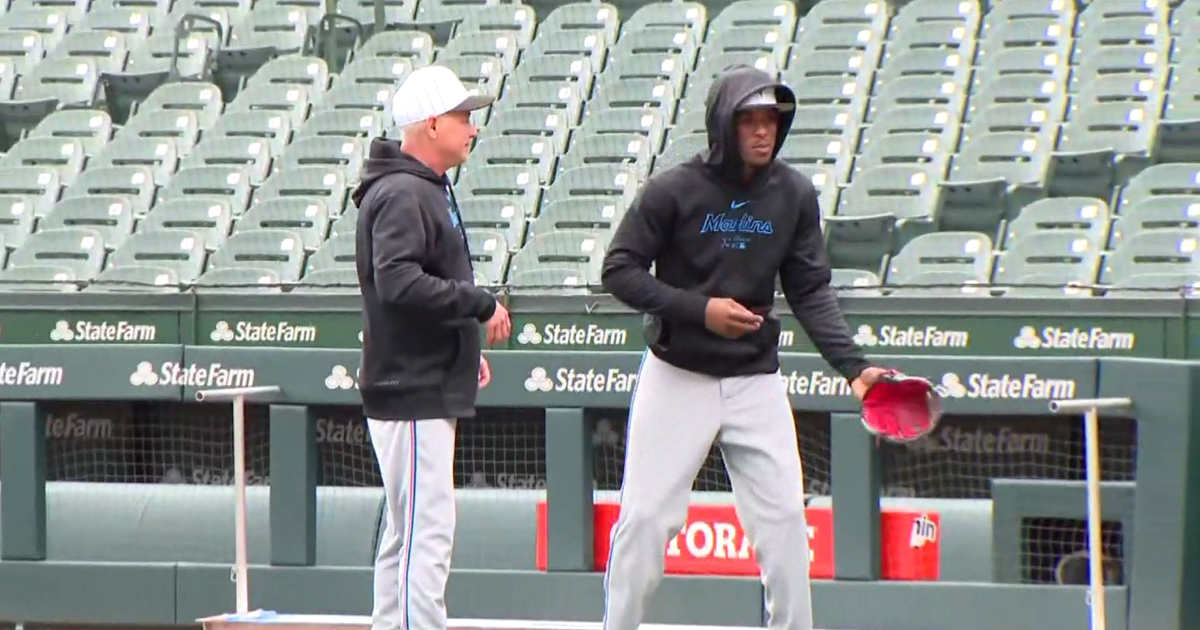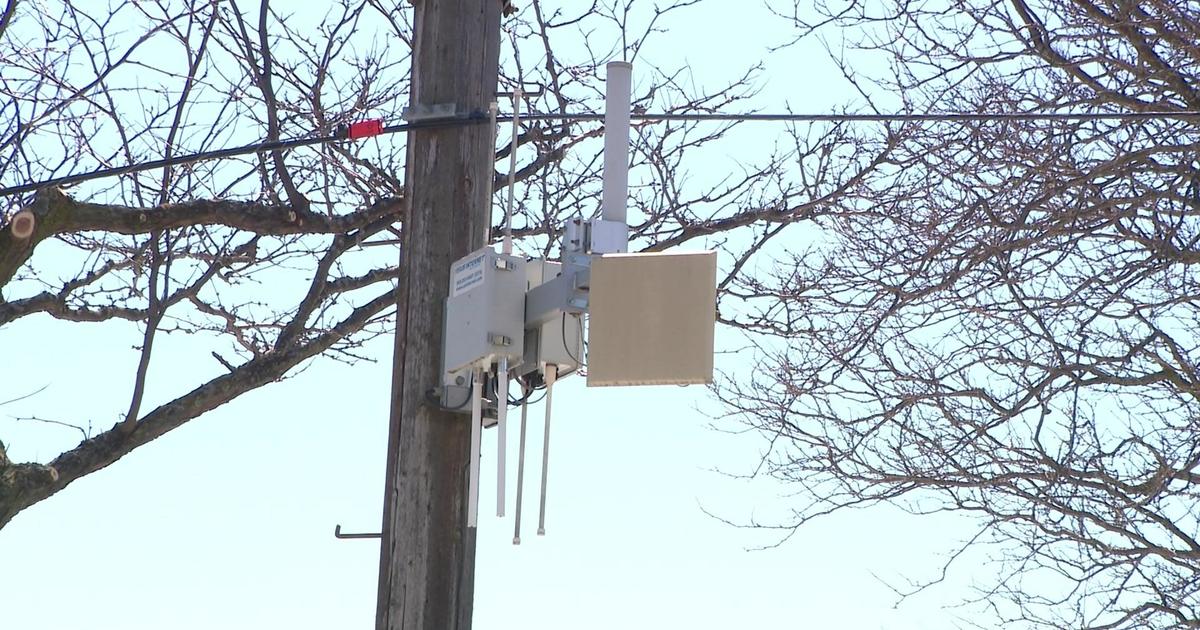Baffoe: Clearing Up What Is A Catch In The NFL
By Tim Baffoe--
(CBS) It happened again Sunday.
There was 8:59 left in the first quarter of the Panthers-Eagles contest. Cam Newton fired a ball to Ted Ginn Jr., who controlled the ball with both hands. Defensive back Nolan Carroll II got his hands on the ball a millisecond later while simultaneously taking Ginn to the ground. The receiver's butt made contact with the ground with his hands and arms still cradling the ball. Carroll then ripped the ball out a millisecond later into the air and eventually into his own hands.
Logic and the benefit of replay video dictate this is a completed pass, ball-carrier down by contact, Carolina ball on the 6- or 7-yard line. But this is the NFL, a place that logic abandoned long ago.
The Eagles were awarded the ball because, hey, whatever, right?
This occurred just a week after Lions receiver Golden Tate was ruled to have caught a touchdown even though the Bears stripped him of the ball for what was clearly an interception.
NFL vice president of officiating Dean Blandino, whose name sounds like the mafia lawyer he essentially is, said of the Tate catch:
"This is different than the plays we've been talking about — the Dez Bryant play or the Calvin Johnson play. This is not a receiver who's going to the ground. The issue here is did he become a runner before the ball came loose."
So the difference between the Tate catch and Ginn not-catch was the latter was going to the ground, while the former fell to the ground but the end zone isn't considered ground but that Blue Heaven space in hopscotch where the earth ceases to be. Just like Tate ceased to be a receiver and transubstantiated into a runner by league hard-and-fast ambiguous definition.
But what about Bengals tight end Tyler Eifert's no-catch a few weeks before Tate's touchdown? Eifert secured the ball, turned, broke the plane while being contacted by a defender, and had the ball dislodged afterward while going downward. (If Ginn wasn't going to the ground, then I'm not sure the other phrasing to use here.) It was ruled incomplete.
And these (non)catches all come after the infamous rulings against Dez Bryant last year and the Calvin Johnson Rule that started it all in 2011.
So what the hell is a catch in the NFL anymore? The referees certainly don't know. Their boss, Blandino, has already contradicted himself in an effort to not have to admit the officials are either clueless, have their hands tied or both. And in the end, some really amazing feats of athleticism on both side of the ball are squandered for the sake of subjectivity that really shouldn't be so difficult to interpret.
So I have decided to clear things up, free of charge to the NFL that so nobly shed its tax-exempt status earlier this year (but CBS, you're still paying me for this). All of the following must be met in order to qualify for a successful completion of a pass in the National Football League and in any of its current or future sub-leagues, minor leagues, territories and duchies.
--- At least one extremity must firmly possess the football. In most cases, this will involve some combination of hand(s)/arm(s). Should a receiver not have hands/arms, the back of the knee with ball firmly squeezed between calf and thigh will suffice, as will a ball wedged into a receiver's facemask if the game is being played in a straight-to-video comedy from the 1990s.
--- Once a receiver in possession of the football — with the football secured and not squirming like the commissioner being questioned by Rachel Nichols — has a knee, shin, posterior, hip, shoulder, deltoid, forearm, bicep or triceps touch the ground, he must continue to squeeze the ball as though to deflate it (but not really deflate it, because please don't deflate balls anymore, players). Then he must call out, "I AM IN POSSESSION OF THIS FOOTBALL. THE FOOTBALL AND I ARE ONE" so that an official can hear and declare the catch made. If a player has a doctor-noted vocal cord condition, is at the bottom of a scrum or is a mute, he may use Morse code.
--- Once a receiver in possession of the football — with the football secured and not wiggling like Daniel Snyder trying to fit in his Members only jacket — has the football break the plane of the goal line, he must continue to maintain security of the football until handing to the referee like he's been there before. You know, like Barry Sanders used to do because there's no "I" in "team," and expressions of individuality both break down the cohesiveness of the unit and are an affront to the delicate sensibilities of both the opponent who just allowed the receiver to score as well as guys at home who played the game at the highest level of varsity and never needed to draw attention to themselves or rub it in. And another thing: What's with these tattoos? Unless it's a military tattoo, a memorial to a deceased loved one or an Irish flag, any tattoo on a receiver will result in a touchback.
--- After establishing possession on one's feet and before the end zone, a receiver must make a football move. For an official definition of football move, see the league's definition that contains an actual use of "etc."
--- That "etc." includes all of but is not limited to the following: Tebowing, wiggling toes after a spinal injury, jazz hands, moving like Drake in the "Hotline Bling" video, saluting the NFL shield, a head injury seizure, writing a check for a uniform violation fine, removing your GIF or Vine footage of a game or assaulting a special teams coach.
--- All catches are up to the discretion of the game officials who have every accessible video angle and will still get calls wrong because the league owns your soul, and you'll continue to watch no matter how much you complain.
I hope this clears the issue up.
Tim Baffoe is a columnist for CBSChicago.com. Follow Tim on Twitter @TimBaffoe. The views expressed on this page are those of the author, not CBS Local Chicago or our affiliated television and radio stations.



